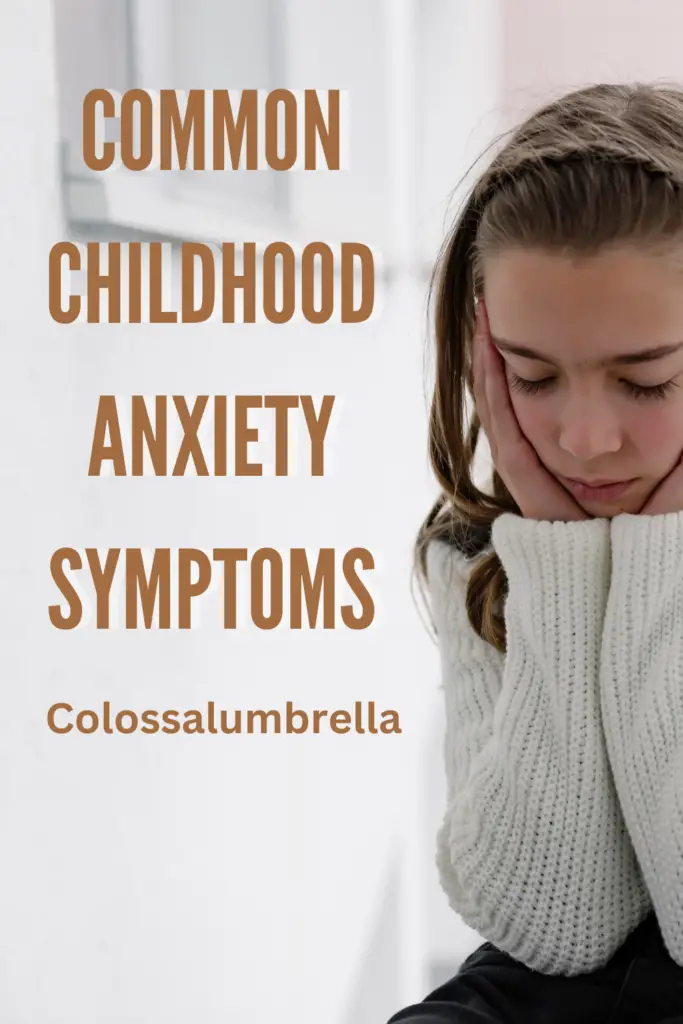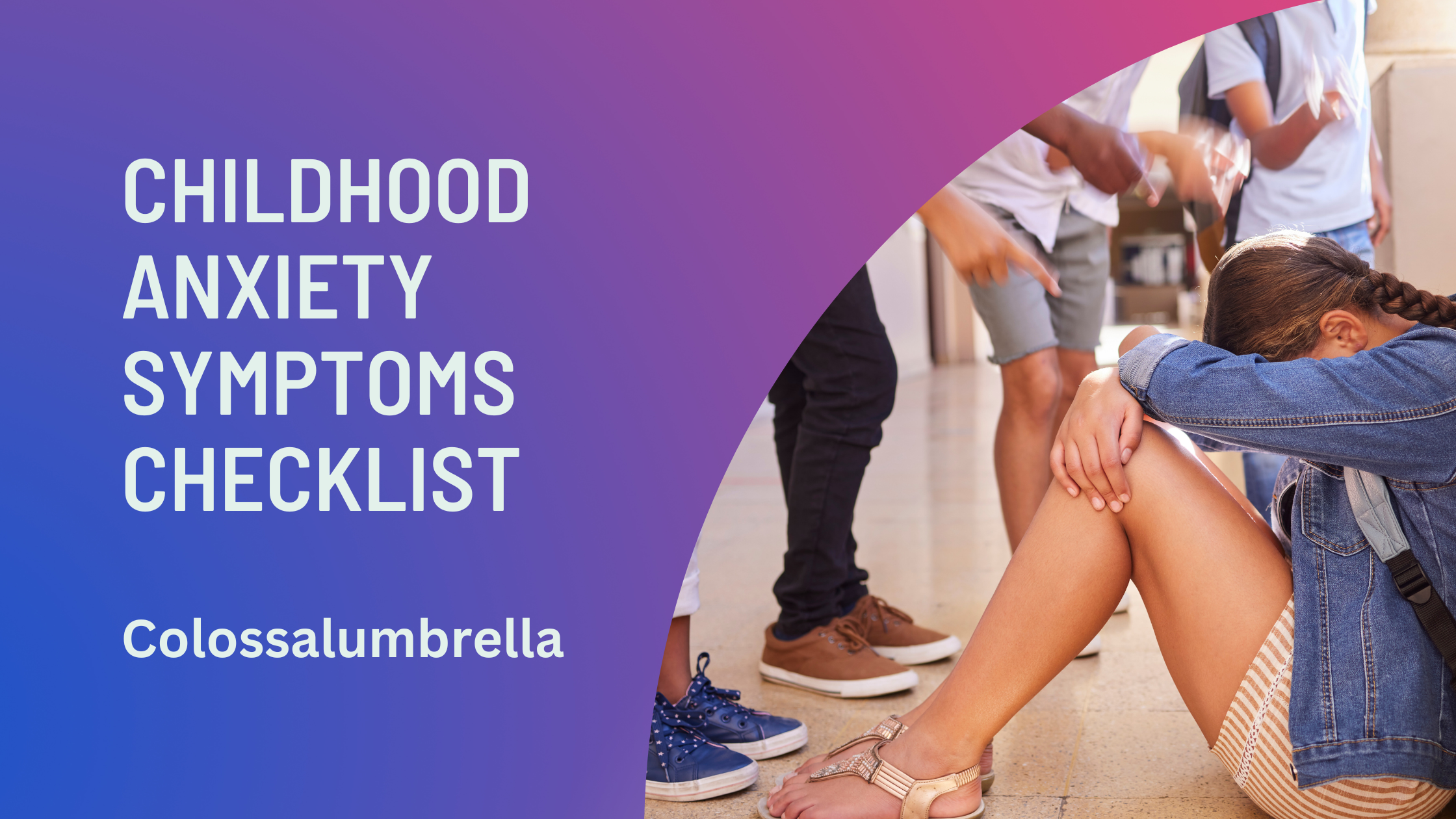Contents
As parents and caregivers, our primary mission is to safeguard our children’s well-being, both physically and emotionally. While we may recognize visible signs of distress, it’s the unseen world of childhood anxiety that often remains hidden, waiting to be unraveled. This blog post throws light on a powerful tool, a childhood anxiety symptoms checklist, that will empower us to recognize and address these hidden struggles.
Imagine a young mind, vibrant and curious, brimming with endless possibilities. But behind the scenes, anxiety can cast a shadow, whispering doubts and fears into innocent ears. It’s crucial for us to shed light on this invisible adversary, for only then can we confront it head-on and guide our children toward a path of resilience and emotional well-being.
This checklist, our trusty guide, will help us decipher the secret language of anxiety, unlocking its cryptic messages and revealing the telltale signs that often go unnoticed.
Subscribe to my blog for Parenting tips that will make you feel like a pro, and get access to exclusive free Printables that will keep your little ones busy and happy!
Understanding Childhood Anxiety
Anxiety is a normal human emotion that everyone experiences from time to time. It’s our body’s natural response to stress, danger, or uncertainty. However, when anxiety becomes excessive or chronic, it can interfere with daily life and development. Childhood anxiety is a common mental health condition that affects approximately 1 in 8 children. It can manifest in many different ways, depending on the child and their circumstances.
Common Anxiety Symptoms in Children
Anxiety symptoms in children can be physical, emotional, or behavioral. Some common signs and symptoms of children’s anxiety include:
- Excessive worry or fear about everyday situations
- Avoidance of certain people, places, or activities
- Trouble sleeping or staying asleep
- Difficulty concentrating or paying attention
- Physical symptoms like headaches, stomachaches, or nausea
- Restlessness or irritability
- Panic attacks or sudden outbursts of fear
- Perfectionism or excessive self-criticism
Childhood Anxiety Statistics
Childhood anxiety is a growing concern worldwide. According to the World Health Organization, anxiety disorders are the most common mental health conditions in children and adolescents. In the United States, anxiety affects approximately 7.1% of children aged 3-17 years old. However, due to stigma and lack of awareness, many children do not receive the help they need.
Anxiety Disorders in Childhood
Anxiety disorders are a group of mental health conditions characterized by excessive and persistent anxiety and fear. There are several types of anxiety disorders that can affect children, including:
- Generalized anxiety disorder (GAD)
- Social anxiety disorder (SAD)
- Separation anxiety disorder (SAD)
- Panic disorder
- Obsessive-compulsive disorder (OCD)
- Post-traumatic stress disorder (PTSD)

Common Childhood Anxiety Symptoms
Emotional Symptoms
- Excessive worry or fear: The child may worry excessively about everyday situations or events.
- Irritability or mood swings: Moodiness and irritability are often prevalent in children with anxiety.
- Restlessness or feeling on edge: Constant restlessness or an inability to relax may indicate anxiety.
- Difficulty concentrating: Anxiety can impair a child’s ability to focus and concentrate.
- Excessive need for reassurance: A child with anxiety may constantly seek reassurance from parents or caregivers.
Behavioral Symptoms
- Avoidance of certain situations or activities: Anxious children may avoid situations that trigger their anxiety.
- Difficulty sleeping or experiencing frequent nightmares: Sleep disturbances are common in children with anxiety.
- Changes in appetite or weight: Anxiety can impact a child’s eating habits, leading to changes in appetite or weight.
- Nail biting or other nervous habits: Anxious children may engage in nervous habits as a way to cope with anxiety.
- Clinginess or separation anxiety: Fear of separation from loved ones is a common symptom of childhood anxiety.
Physical Symptoms
- Headaches or stomachaches without a medical cause: Anxiety can manifest as physical symptoms like unexplained headaches or stomachaches.
- Rapid heartbeat or shortness of breath: Increased heart rate and difficulty breathing can accompany anxiety.
- Sweating or trembling: Anxious children may experience excessive sweating or trembling.
- Dizziness or lightheadedness: Feelings of dizziness or lightheadedness may occur during anxiety episodes.
- Muscle tension or fatigue: Anxiety can cause muscle tension or chronic fatigue in children.
Assessing Childhood Anxiety
While this checklist provides an overview of common anxiety symptoms, it’s important to seek professional help for an accurate diagnosis. Parents and caregivers play a vital role in observing and documenting their child’s symptoms, which can aid mental health professionals in making an informed assessment.
Download Childhood anxiety symptoms checklist
What to Do if You Recognize Symptoms
If you recognize anxiety symptoms in your child, there are several steps you can take to support them:
- Communicate with your child: Encourage open and honest conversations about their feelings and concerns.
- Seek professional evaluation: Consult with a mental health professional who specializes in working with children to obtain a formal diagnosis.
- Explore treatment options: Based on the assessment, the professional may recommend various interventions, such as therapy, cognitive-behavioral techniques, or medication if necessary.
- Implement strategies for managing anxiety: Work with the professional to develop coping mechanisms, relaxation techniques, and lifestyle adjustments to help your child manage their anxiety effectively.
Identifying Anxiety Symptoms in Preschoolers
Anxiety can be especially challenging to identify in preschool-aged children, as they may not have the language skills to express their feelings. Some signs of anxiety in preschoolers may include:
- Excessive clinginess or separation anxiety
- Difficulty adjusting to new people or situations
- Fear of being alone or away from caregivers
- Sleep disturbances or nightmares
- Tantrums or meltdowns when faced with stress or change
What Parents Can Do to Help Their Anxious Child
If you suspect that your child is struggling with anxiety, there are several things you can do to help:
- Listen to your child and validate their feelings
- Provide a calm and supportive environment
- Help your child develop coping skills, such as deep breathing or mindfulness
- Encourage healthy habits, such as exercise and good sleep hygiene
- Seek professional help if necessary
- Professional Anxiety Treatment Options for Children
Conclusion
Recognizing and addressing childhood anxiety symptoms is essential for the well-being and development of children. By using this comprehensive checklist, parents and caregivers can better identify potential signs of anxiety in their children. Remember, early intervention and support can make a significant difference in managing childhood anxiety and helping children thrive. By taking action and seeking professional help, you are taking a crucial step toward supporting your child’s mental health and overall well-being.
I would stay connected and keep you updated with parenting tips, pregnancy guides, creative ideas, easy crafts, and Free Printables. Subscribe to Colossalumbrella to get new ideas delivered to your inbox. Follow me on Facebook, Pinterest, Twitter, and Instagram.
Disclaimer: The content of this blog is for informational purposes only and is not intended to be a substitute for professional medical advice, diagnosis, or treatment. Always seek the advice of your physician or other qualified healthcare providers with any questions you may have regarding a medical condition.
